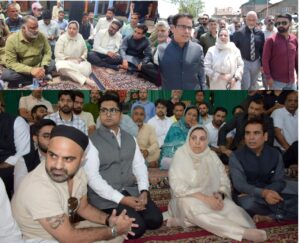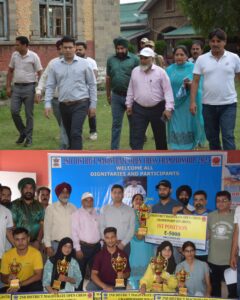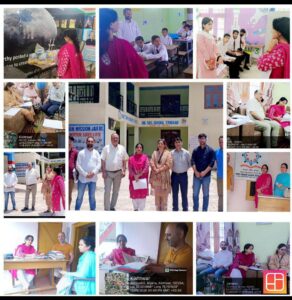CS for equitable development of tribal areas under DA-JGUA
SRINAGAR, JUNE 18: Chief Secretary, Atal Dulloo, today chaired the maiden Apex Committee meeting held to review and accelerate implementation of the ‘Dharti Aaba Janjatiya Gram Utkarsh Abhiyan’ (DA-JGUA), marking a significant step towards equitable and holistic development of tribal communities.
The Abhiyan is a flagship initiative of the Government of India aimed at comprehensive human development in tribal areas.
Present in the meeting were Principal Secretary, Power Development Department; Principal Secretary, Social Welfare Department; Principal Secretary, School Education Department; Commissioner Secretary, Food, Civil Supplies & Consumer Affairs; Secretary, Tribal Affairs; Secretary, Planning; Secretary, Health & Medical Education; Secretary, Information Technology; Secretary, Rural Development Department besides other concerned senior officers.
The Chief Secretary directed the department to work hard towards ensuring that the benefits of the scheme equally reach all tribal areas of J&K. He laid particular stress on the importance of robust data validation at the grassroots level.
The Chief Secretary asked the Deputy Commissioners to conduct thorough ground truthing, visiting the villages to validate the data and pinpoint gaps across 25 critical parameters. He reiterated that reliable data is essential for impactful interventions, highlighting the need for meticulous verification to ensure data accuracy.
He further enjoined upon the concerned departments to prepare Detailed Project reports (DPRs) in a time-bound manner, specifically designed to plug the identified gaps. He highlighted the scheme’s potential for transformative change, underscoring the importance of seizing this opportunity to bring about sustainable development in the villages.
The Chief Secretary called upon the Deputy Commissioners to personally monitor the entire process in their respective districts. This oversight, he stressed, would ensure the qualitative collection of data and subsequent gap analysis, thereby guaranteeing that future interventions are both fruitful and result-oriented, leading to tangible improvements in the lives of tribal communities.
Secretary, Tribal Affairs, Prasanna G. Ramaswamy, highlighted the key components and progress of the scheme, stating that it operates through two primary components. One component involves direct funding by the Ministry for Tribal Affairs, under which the Project Appraisal Committee has approved proposals worth ₹877.10 lakh for 2024-25. This included ₹ 500.00 lakh for establishing 5 Tribal Multipurpose Marketing Centers (TMMCs).
The Secretary added that the scheme also envisages setting up of Forest Rights Act Cells, one at the UT level and twenty at the district level, with an outlay of ₹377.10 Lakh. These cells will be crucial for managing the FRA claims and implementing the CFR Management Plans.
The scheme’s second component involves funding from various Government of India Ministries through their Developmental Action Plan for Scheduled Tribes (DAPST)/Tribal Sub Plan (TSP) allocations. Eligible villages must meet specific criteria, including a population of 500 or more with at least 50% Scheduled Tribe population, or villages in Aspirational Districts with 50 or more Scheduled Tribes.
Moreover, a preliminary gap analysis, covering 25 key indicators from housing and road connectivity to education, health and market access, has been conducted by MoTA. This data is being rigorously verified through ground-truthing exercises at the village level via Gram Sabhas, ensuring accurate assessment of developmental needs.
Moreover, seventeen Union Ministries are working together to address the identified gaps and ensure that tribal villages benefit from all 25 approved interventions. These initiatives included PMAY-G, PMGSY, Jal Jeevan Mission, RDSS, PM Ujjwala Yojana, Poshan Abhiyan, Samagra Shiksha Abhiyan, as well as schemes for skill development, sustainable agriculture and tourism, aiming for comprehensive development of tribal areas.
For the Tribal Villages component, verified village-wise gaps approved by the UT-level Apex Committee, will guide coordinated efforts by various departments in J&K to implement DA-JGUA effectively. This included launching IEC campaigns, allocating separate budget lines under DAPST schemes, conducting baseline assessments and preparing detailed project proposals aligned with gap analyses for funding from relevant ministries.
Pertinently, the Dharti Aaba Janjatiya Gram Utkarsh Abhiyan (DA-JGUA) is a flagship initiative of the Government of India aimed at saturating the tribal areas with essential services and opportunities for holistic development. Launched in 2024, the mission focuses on a multi-sectoral approach involving various Ministries to address critical gaps in tribal villages across the nation.






